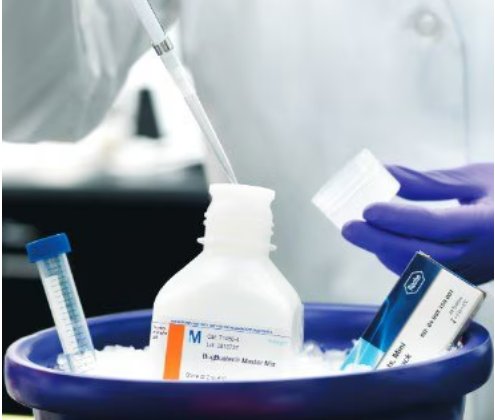 首页>
生物试剂
首页>
生物试剂
商家描述
售后服务
商家资质信息
产品评价(0)
The small intestine consists of continuous villi and crypts. The crypt is mainly a proliferative compartment and is maintained by multipotent stem cells whereas the villus represents the differentiated compartment, and it receives cells from multiple crypts. The functional compartment of the epithelium contains differentiated cells that populate the villi and can be categorized based on their function: enterocytes that function to absorb nutrients, goblet cells that secrete a protective mucus barrier, and enteroendocrine cells that release gastrointestinal hormones. Intestinal crypts contain intestinal stem cells (ISC), which are multipotent adult stem cells that reside in the base of crypts. They continuously self-renew by dividing and differentiate into the specialized cells of the intestinal epithelium, which renews throughout life. ISCs located either at the crypt base interspersed between the Paneth cells can be categorized into active-cycling (Lgr5+ cells) or those located near the þ4 position in the crypt as slow-cycling Bmi-1+ cells. Paneth cells that are responsible for secreting antibacterial peptides reside at the base of the proliferative compartment. As ISCs begin to differentiate, they migrate toward the lumen and are eventually shed, either from the tip of the intestinal villi or from the surface of the colonic epithelium. Clone F5C12 is suitable for detecting Lgr5+ cells and facilitates enrichment of Lg5GFP cells by FACS analysis. It does not detect Bmi-1+ or Lyz1 marker for Peneth cells. (Ref.: Smith, NR., et al. (2018). Cell. Mol. Gastroenterol. Hepatol. 6(1);79-96; Umar, S. (2010). Curr. Gastroenterol. Rep. 12(5); 340-348).,官网链接:https://www.sigmaaldrich.cn/product/mm/mabs2231
默克
科研、开发、生产。
作为生命科学行业的全球领先供应商,我们致力于为科研、生物技术开发和生产,以及制药药物疗法开发和生产提供各类解决方案和服务。
 会员登录
会员登录.getTime()%>)
 购物车()
购物车()

 成功收藏产品
成功收藏产品
